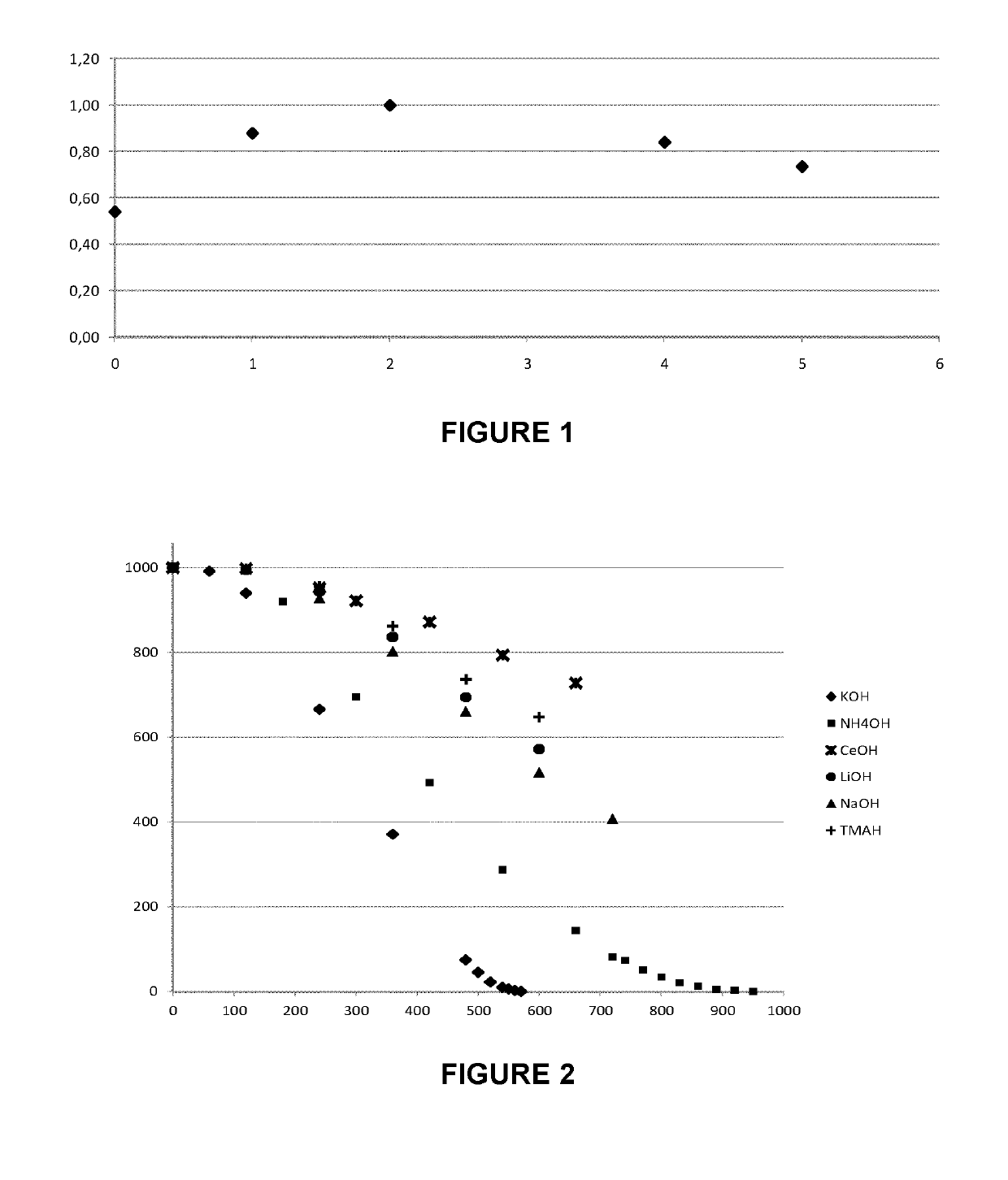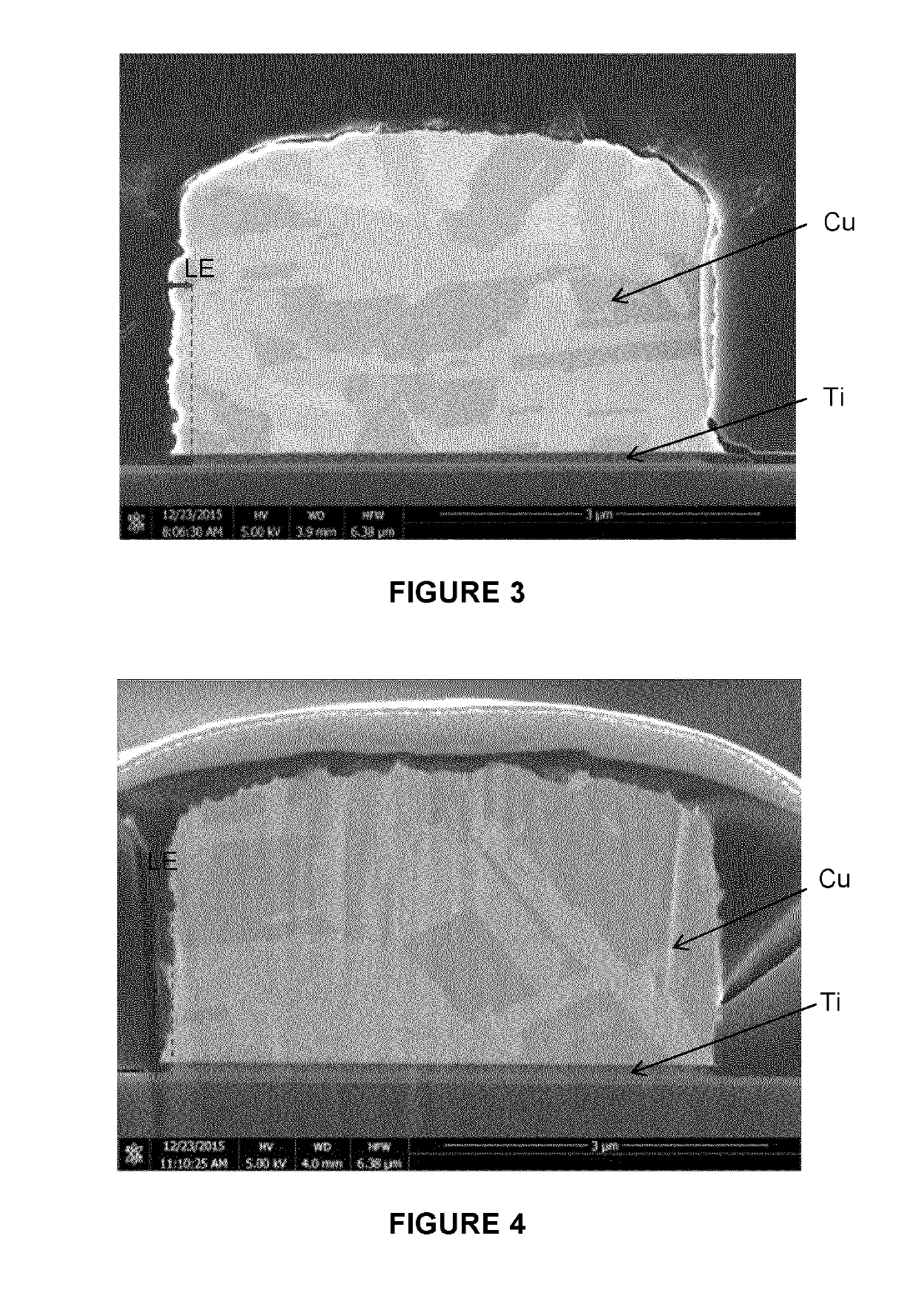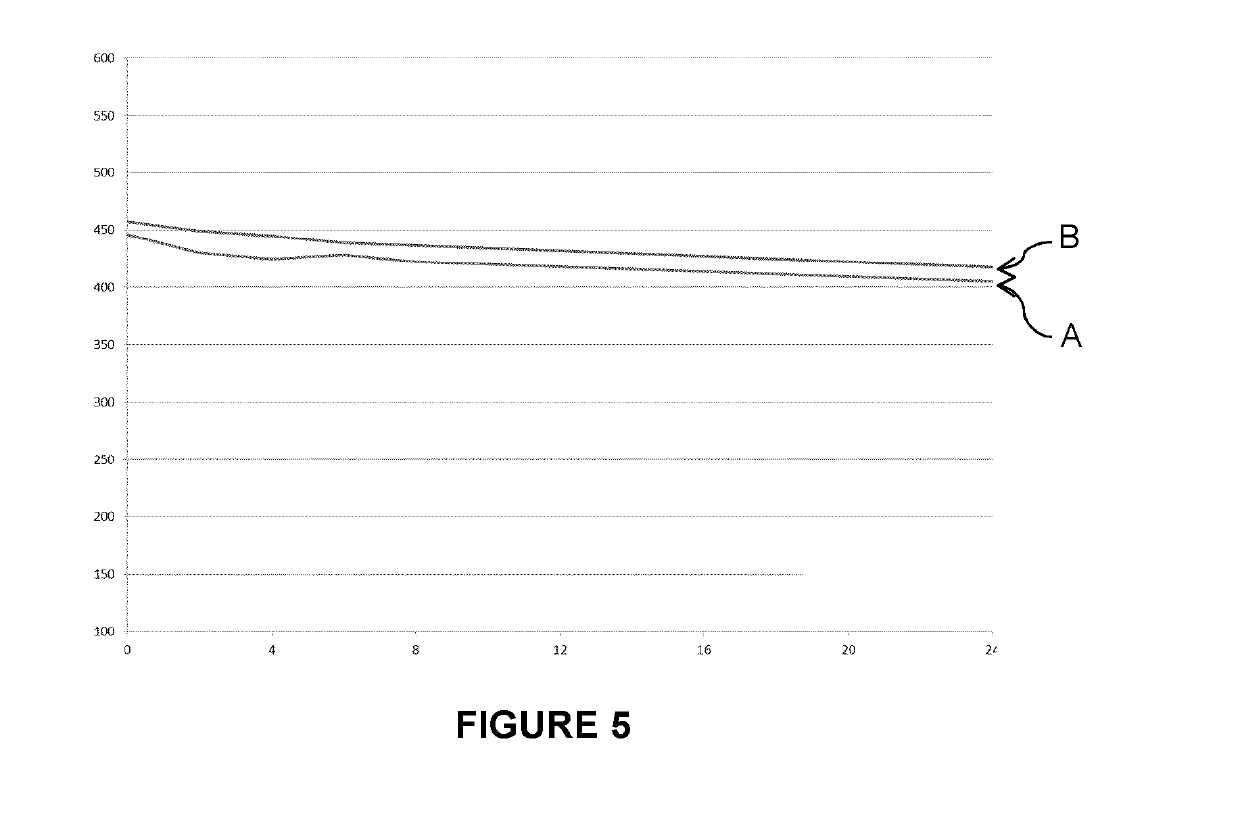Solution and method for etching titanium based materials
a titanium based material and solution technology, applied in the direction of surface treatment compositions, electrical devices, chemical instruments and processes, etc., can solve the problems of difficult control of aluminum compatibility, the interface with dielectric, and the inability of pure hydrogen peroxide to remove titanium oxide normally present at the surface,
- Summary
- Abstract
- Description
- Claims
- Application Information
AI Technical Summary
Benefits of technology
Problems solved by technology
Method used
Image
Examples
example 1
[0053]Six solutions were prepared as follows.
[0054]First, six concentrated mixtures containing 5.5 w % potassium hydroxide or the molar equivalent for the five other alcalins tested (Lithium, sodium, Cerium, tetramethyammonium and ammonium hydroxide) and 0.1 w % C.D.T.A. were prepared. Then, each concentrate was added to pure hydrogen peroxide so that to reach the same pH of about 7.5 in six different beakers.
[0055]The measured pH, temperature and calculated hydrogen peroxide concentration of each solution are reported in Table 1.
TABLE 1H2O2Cation usedpHconcentrationT° C.Potassium7.5428.222.9ammonium7.5921.222.6Lithium7.6128.221.8Sodium7.5421.222.9Cerium7.7128.222.1Tetramethylammonium7.5928.222.8
[0056]FIG. 2 shows the thickness change vs immersion time for 100 nm Titanium deposited by PVD on silicon oxide, immersed at room temperature in the different prepared solutions. The remaining Titanium thickness was evaluated through electrical resistance measurement. The remaining thickness...
example 2
Influence of the Constituents on Titanium Etch Rate and Solution Stability
[0062]The following ten solutions where prepared as follows.
[0063]Pure 30 w % hydrogen peroxide was adjusted at pH 7.5 with concentrate solutions containing either 5.5 w % KOH or 8.2 w % of 28 w % NH4OH, and different complexing agents. The complexing agents were added to the concentrate solutions before mixing with hydrogen peroxide at a concentration of 0.055 w % (about 30 ppm in the final mixture), 0.11 w % (about 60 ppm in the final mixture) or 022 w % (about 120 ppm in the final mixture).
[0064]The complexing agents tested or stability are CDTA (trans-1,2-Diaminocyclohexane-N,N,N,N Tetra acetic Acid), EDDS (Ethylenediaminedisuccinic acid), EDTA (Ethylenediamine tetra acetic acid) and DTPMP (diethylene triaminepentamethylphosphonic acid).
[0065]The approximate base concentration in the final mixture was calculated from the mass of concentrate used to adjust the pH at 7.5.
TABLE 2H2O2 w %CDTA ppmKOH w %28 w % ...
example 3
Influence of Metallic Contaminants on the Stability of the Etching Solutions
[0067]Four solutions were prepared with a similar procedure as described in example 2.
[0068]The solutions were heated at 50° C. in covered beakers, and the loading with titanium was achieved by immersing the equivalent of 2.5 wafers having a diameter of 300 mm per liter (¼ of wafer per 100 ml) for a time sufficient to remove all the 100 nm Titanium film present on the surface of the coupons. The solutions were evaluated in term of pH change and Titanium etch rate variation after contamination and after ageing with dissolved Titanium.
[0069]Table 4 teaches the composition of the four solutions.
TABLE 4H2O2C.D.T.A.KOHE.D.D.S.D.T.P.M.P.w %ppmw %ppmppmsolution 128.2600.3500solution 228.21200.35solution 328.20.35120solution 428.20.35120
[0070]Table 5 shows the titanium etch rate (A / min) for each solution before titanium contamination, after titanium contamination and when the solution has been maintained 6 hours at ...
PUM
| Property | Measurement | Unit |
|---|---|---|
| temperature | aaaaa | aaaaa |
| temperature | aaaaa | aaaaa |
| temperature | aaaaa | aaaaa |
Abstract
Description
Claims
Application Information
 Login to View More
Login to View More - R&D
- Intellectual Property
- Life Sciences
- Materials
- Tech Scout
- Unparalleled Data Quality
- Higher Quality Content
- 60% Fewer Hallucinations
Browse by: Latest US Patents, China's latest patents, Technical Efficacy Thesaurus, Application Domain, Technology Topic, Popular Technical Reports.
© 2025 PatSnap. All rights reserved.Legal|Privacy policy|Modern Slavery Act Transparency Statement|Sitemap|About US| Contact US: help@patsnap.com



